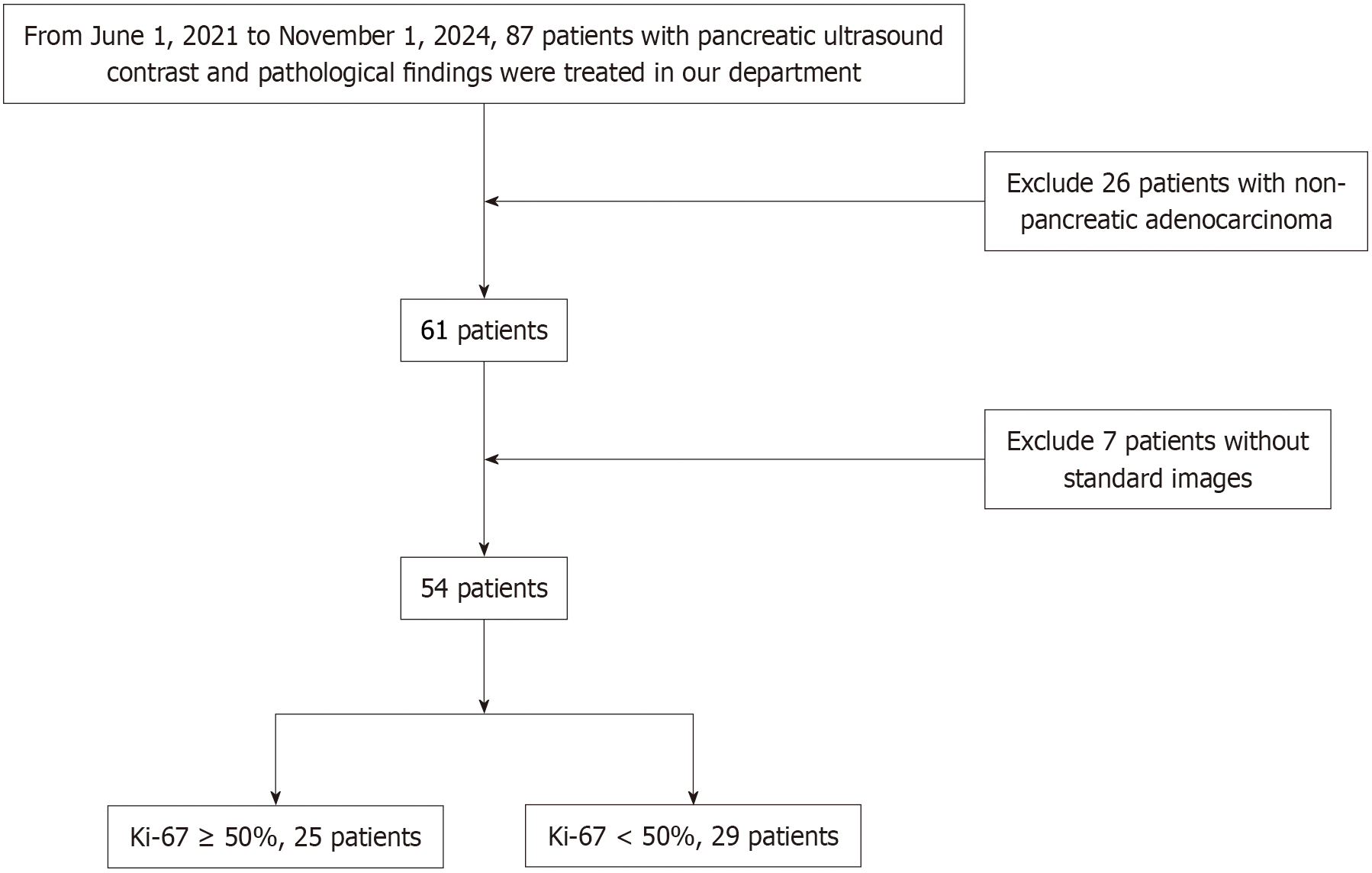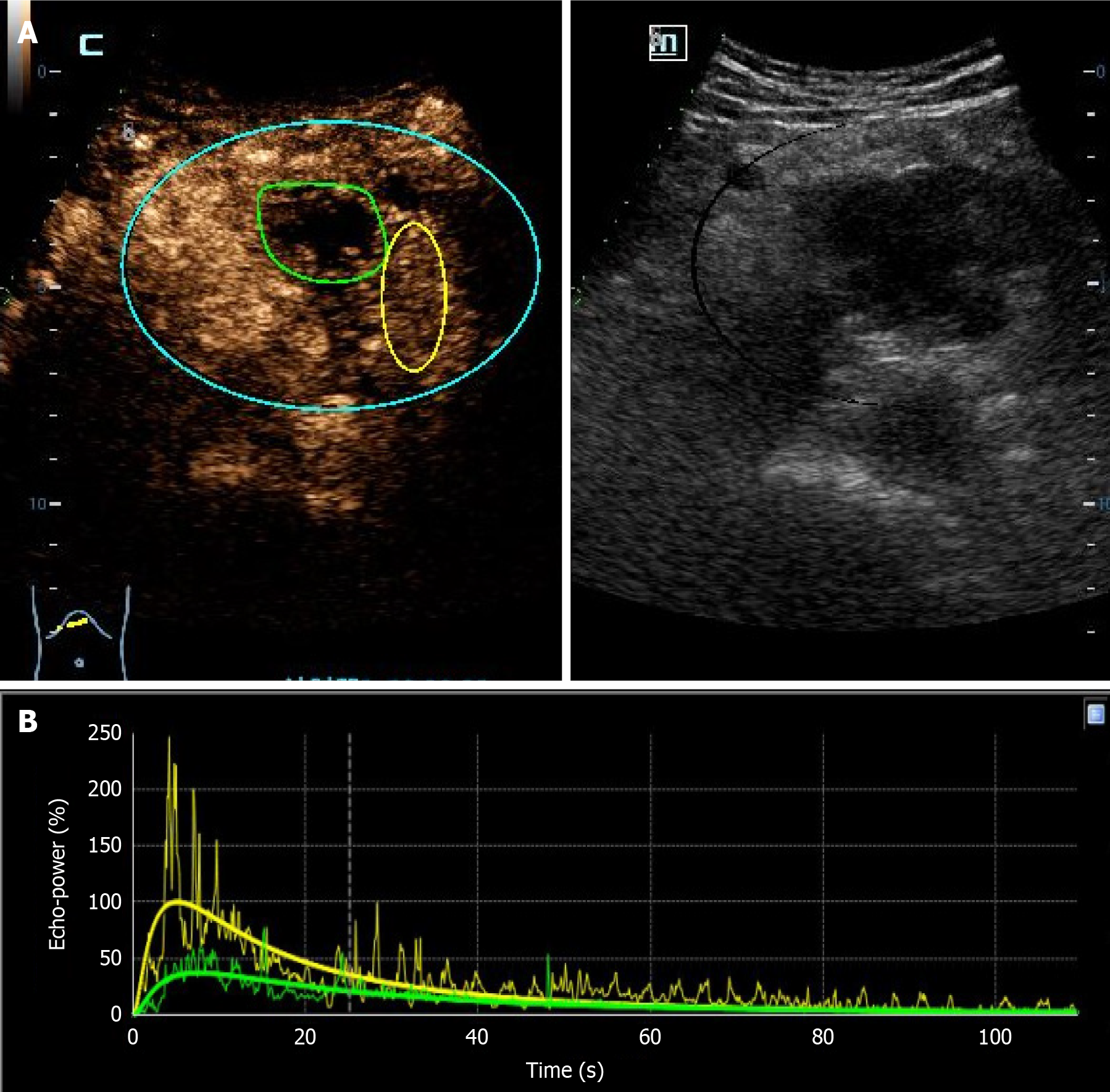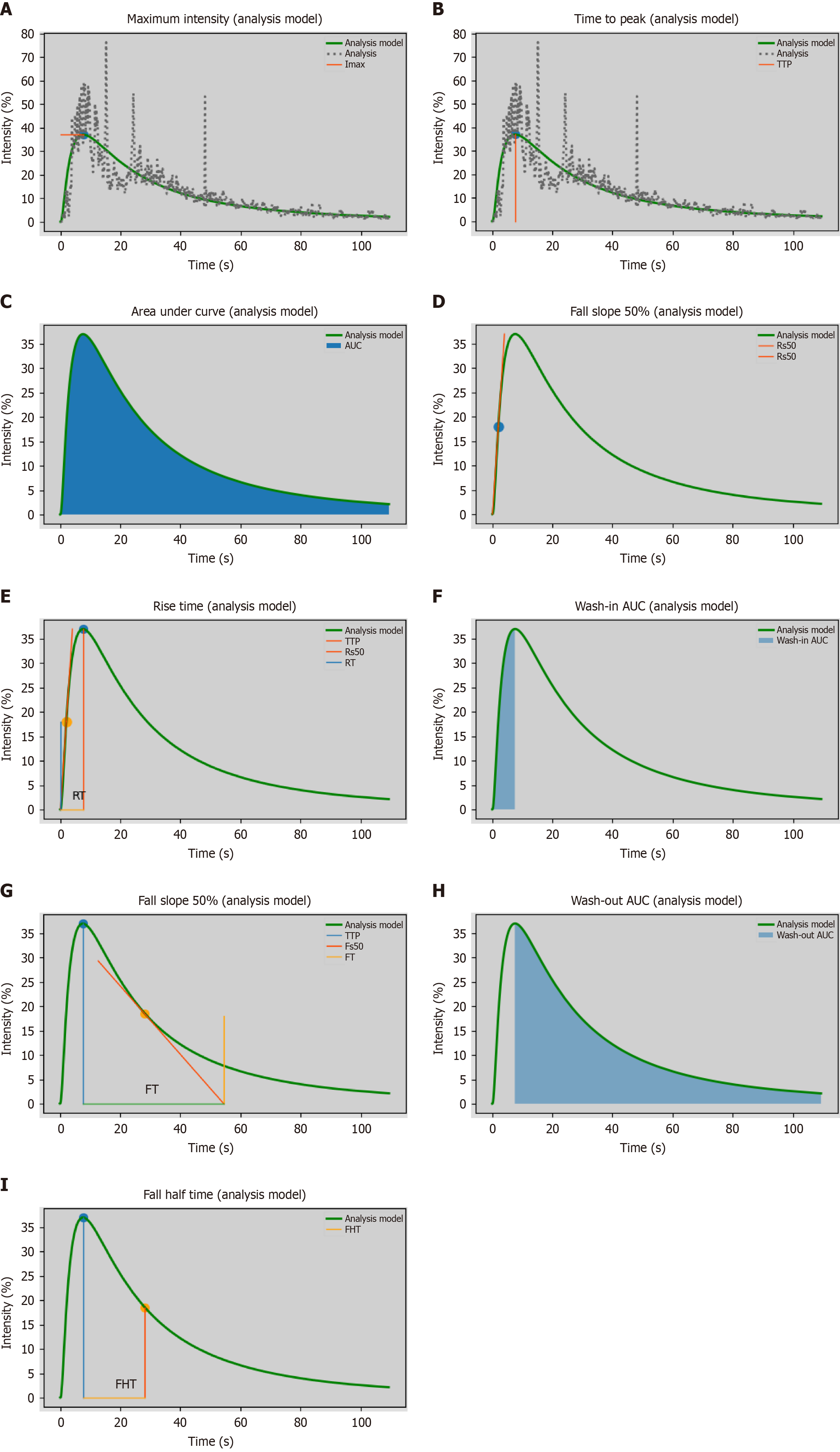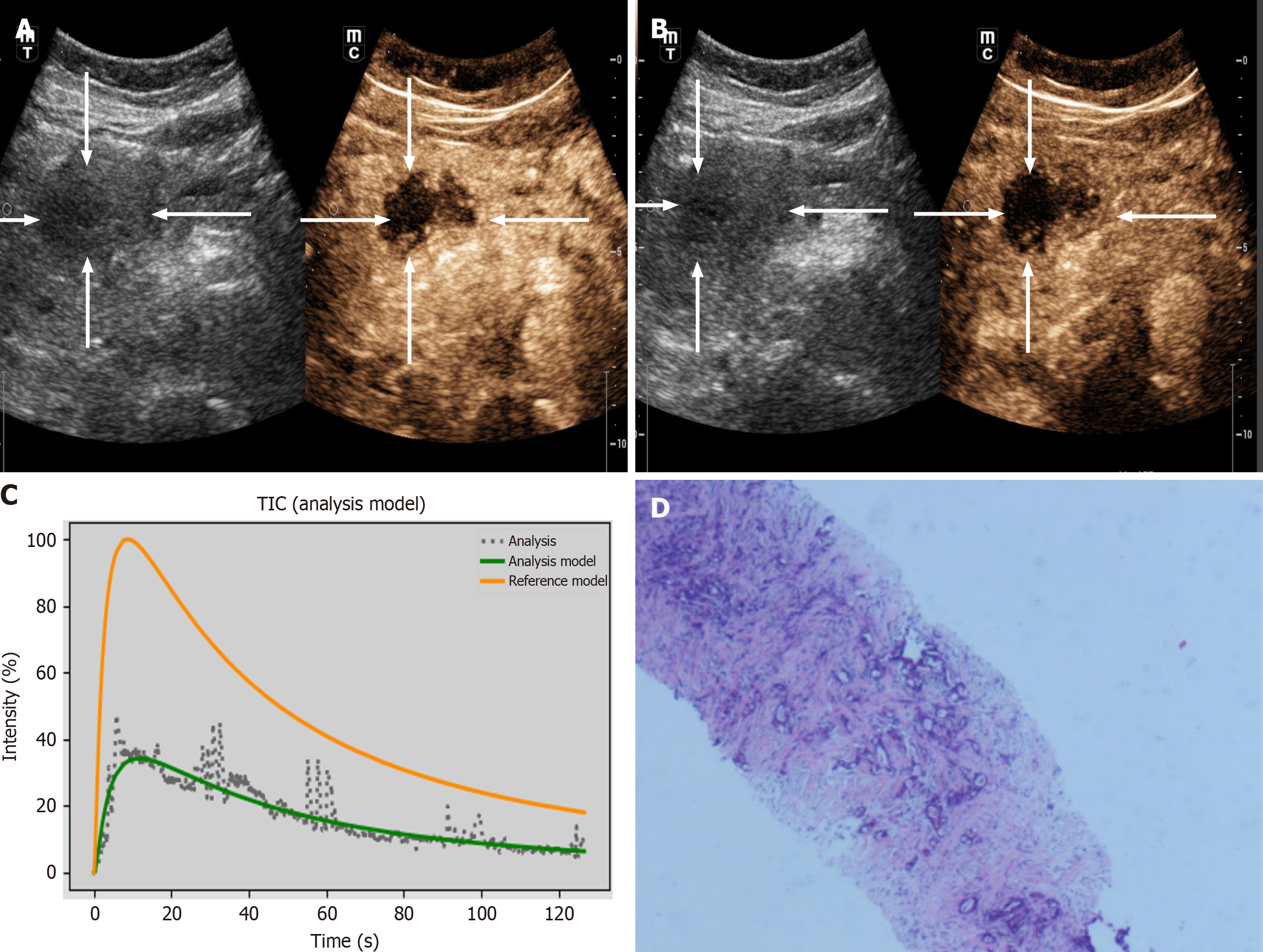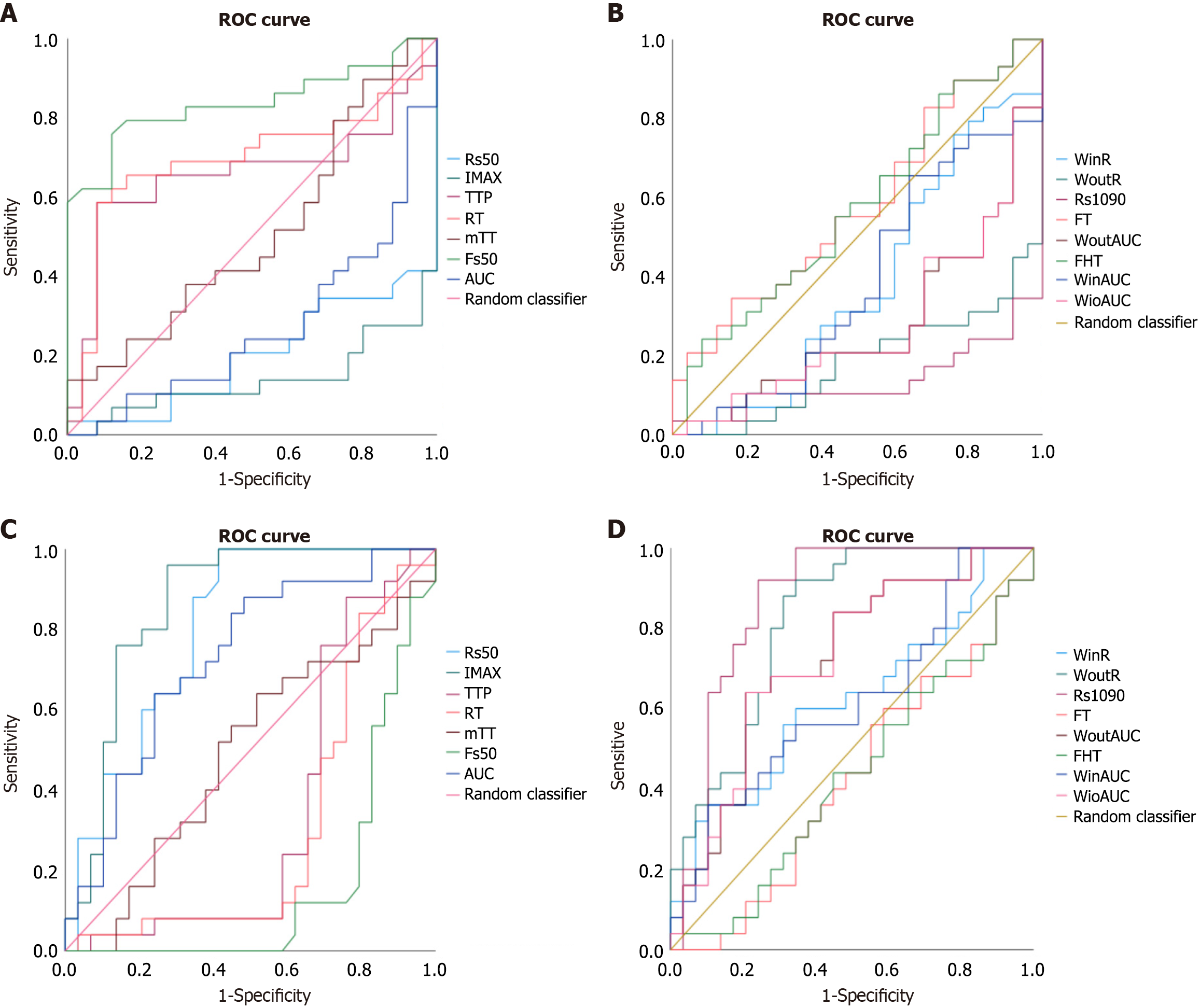Copyright
©The Author(s) 2025.
World J Gastrointest Oncol. Jun 15, 2025; 17(6): 107919
Published online Jun 15, 2025. doi: 10.4251/wjgo.v17.i6.107919
Published online Jun 15, 2025. doi: 10.4251/wjgo.v17.i6.107919
Figure 1 Patient screening and grouping process.
Figure 2 Lesion delineation and time-intensity curve.
A: The delineation area of the region of interest of pancreatic cancer; B: The time-intensity curve. The yellow coil represents the normal pancreatic gland, and the green coil represents the lesion area of pancreatic cancer. Taking the normal pancreatic gland as the control, B shows the time-intensity curves of the two.
Figure 3 Schematic diagram of various contrast-enhanced ultrasound quantitative.
A: Maximum intensity; B: Time to peak; C: Area under the curve; D: Rise slope 50%; E: Rise time; F: Wash-in area under the curve; G: Falling time; H: Wash-out area under the curve; I: Falling half time. IMAX: Maximum intensity; TTP: Time to peak; AUC: Area under the curve; Rs50: Rise slope 50%; RT: Rise time; FT: Falling time; Fs50: Falling slope 50%; FHT: Falling half time.
Figure 4 Schematic diagram of lesion enhancement patterns.
A: Homogeneous hypo enhancement (pattern I); B: Heterogeneous hypo enhancement without cystic components (pattern II); C: Peripheral ring enhancement (pattern III); D: Starry sky enhancement (pattern I); E: Capsular enhancement of cystic components (pattern IV); F: Hypo enhancement of cystic components (pattern VI).
Figure 5 Imaging features and pathological manifestations of pancreatic cancer patients in the Ki-67 low-expression group.
A: Image in the arterial phase, with enhancement pattern type III. The arrow indicates the tumor lesion; B: Image in the venous phase, with enhancement pattern type III. The arrow indicates the tumor lesion; C: The time-intensity curve. The X-axis represents time (second), and the Y-axis represents signal intensity (%). The orange curve represents the surrounding normal pancreatic tissue, and the green curve represents pancreatic cancer; D: The pathological section stained with hematoxylin-eosin (HE) shows pancreatic ductal adenocarcinoma (HE, × 200). TIC: Time-intensity curve.
Figure 6 Imaging features and pathological manifestations of pancreatic cancer patients in the Ki-67 high-expression group.
A: Image in the arterial phase, with enhancement pattern type III. The arrow indicates the tumor lesion; B: Image in the venous phase, with enhancement pattern type III. The arrow indicates the tumor lesion; C: The time-intensity curve. The X-axis represents time (second), and the Y-axis represents signal intensity (%). The orange curve represents the surrounding normal pancreatic tissue, and the green curve represents pancreatic cancer; D: The pathological section stained with hematoxylin-eosin (HE) shows pancreatic ductal adenocarcinoma (HE, × 100). TIC: Time-intensity curve.
Figure 7 The receiver operating characteristic curve.
A: Low Ki-67 expression; B: High Ki-67 expression. ROC: Receiver operating characteristic; Rs50: Rise slope 50%; IMAX: Maximum intensity; TTP: Time to peak; RT: Rise time; mTT: Mean transit time; Fs50: Falling slope 50%; AUC: Area under the curve; WinR: Wash-in rate; WoutR: Wash-out rate; Rs1090: Rise slope 10%-90%; FT: Falling time; FHT: Falling half time; WinAUC: Wash-in area under the curve; WoutAUC: Wash-out area under the curve; WioAUC: Wash-in and out area under curve.
- Citation: Yang ZY, Wan WN, Zhao L, Li SN, Liu Z, Sang L. Noninvasive prediction of Ki-67 expression in pancreatic cancer via contrast-enhanced ultrasound quantitative parameters: A diagnostic model study. World J Gastrointest Oncol 2025; 17(6): 107919
- URL: https://www.wjgnet.com/1948-5204/full/v17/i6/107919.htm
- DOI: https://dx.doi.org/10.4251/wjgo.v17.i6.107919









